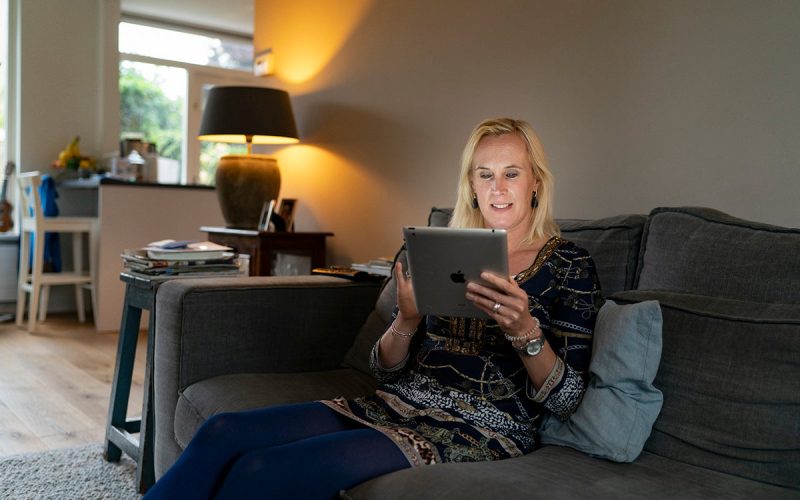The Trials@Home consortium, a public-private partnership funded by the Innovative Medicines Initiative, has spent the past six years exploring the concept of decentralised clinical trials (DCTs) through multistakeholder research. The project has now concluded with the publication of a comprehensive set of recommendations covering methodological, regulatory, ethical, technical, operational, and social aspects of DCTs.
DCTs are an operational model of clinical trials where some or all trial activities are designed to take place at or near the participant’s home, rather than at a traditional clinical site. Use of technology and operational innovations enables less frequent visits to a clinical trial centre, if at all. This in turn has the potential to reduce barriers to participation, enabling inclusion of underserved populations, accelerating recruitment, improving retention, and reducing participant burden.

Mira Zuidgeest
Mira Zuidgeest, the academic project lead, says, “To effectively adopt innovation in our clinical trials, including decentralisation, we need to let go of the notion that trials where participants come to site for data collection are the gold standard. We should not claim to know what trial participants and sites want and are able to do but stay current and use the potential of this digital era, where most elderly can handle a smartphone, digital endpoints can provide more meaningful outcome data, and risk-proportionate approaches are woven into GCP guidelines.”
The research conducted throughout the Trials@Home project used a variety of methodologies, leveraging the diverse array of expertise and knowledge reflected by its 35 international consortium partners. While this meant conducting surveys, focus groups and interviews with various stakeholders, it also included database studies, discrete choice experiments, and the design, set-up, and execution of a pan-European proof-of-concept trial, RADIAL, which compared KPIs from a conventional approach with a hybrid and a fully remote trial arm.
Insights from stakeholders, research projects, and practical lessons from the proof-ofconcept trial fed into the development of the project’s final recommendations. These recommendations cover all aspects of DCTs, including but not limited to participant diversity, site training, carbon footprint, technology, and more. Some are high level, while others are more granular and practical, reflecting the complex and multistakeholder nature of the topic. You are welcome to explore the full set on the Trials@Home website.
Technology is extremely important in DCTs. DCTs use a variety of digital tools to facilitate various clinical trial activities, for example data collection, remote monitoring, consent, and more. These digital tools may come from different vendors, underscoring the need for robust technical support. The Trials@Home consortium explored technological components and support systems through an extensive review of existing technologies, as well as operational experience from RADIAL.
Another key player in clinical trials is the clinical trial site: a hospital, clinic, private practice, or research facility where a clinical trial is conducted, under the oversight of a Principal Investigator (PI) and a dedicated clinical research team. In conventional trials, sites manage recruitment, monitoring, and compliance. These roles shift when implementing DCT approaches, as some activities move to remote settings. The Trials@Home consortium carefully considered the perspective of sites, producing multiple recommendations geared towards their experience as a result.
The project also enshrined the importance of co-creational research, embedding a panel comprised of people with diabetes from the beginning. The panel was consulted throughout the project, ensuring that the perspectives of people living with diabetes were reflected. Considering their extensive contribution throughout the project, the consortium elected to produce a set of recommendations solely dedicated to the inclusion of patient panels in large research consortiums like Trials@Home.
While technological considerations and the perspectives of sites and patients are crucial, these examples only highlight a fraction of the diverse recommendations published by Trials@Home. The Trials@Home project was an important step towards exploring DCTs in a European context and beyond, with its unique proof-of-concept trial, as well as the focus on concrete stakeholder engagement. Additionally, many Trials@Home findings could be incorporated in regulatory guidances such as ICH. While the impact is clear, there are still many interesting research areas within DCTs which have yet to be explored. These recommendations are only the beginning of the journey towards DCTs becoming a commonly adopted approach to clinical trials.
